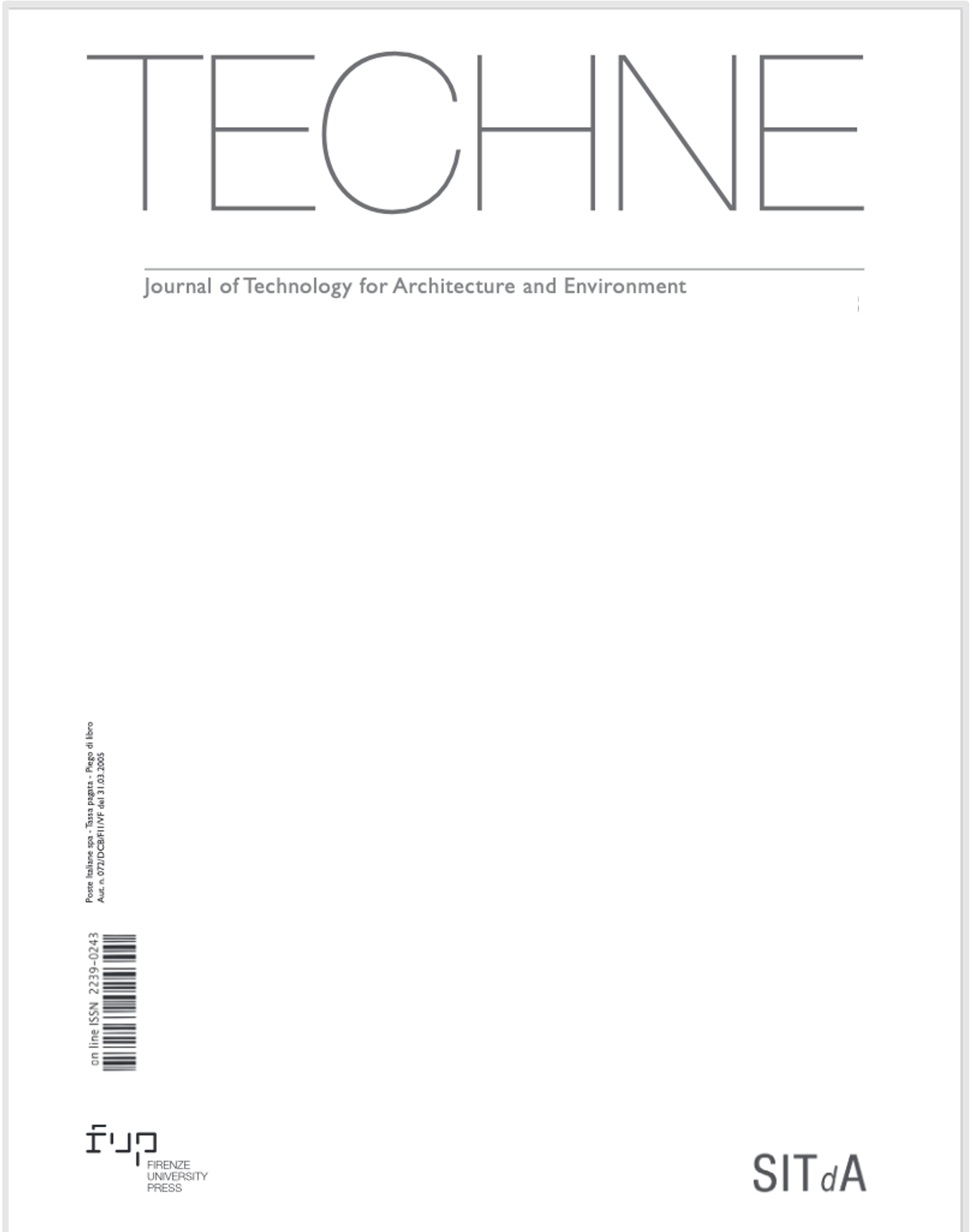Instead of supporting critical design thinking on the correct role and use of technologies, the tools and means prevail over the meaning of the proposal process. In this way, they predetermine the outcome of the project exclusively on performative basis, transforming the design process into a decontextualized assembly of technical parts (Emery, 2011). Already clear distortions appear in the use of BIM, in the spread of home and urban automation systems and in the uncritical transfer of the so-called Key-Enabling Technologies even to particularly sensitive contexts like those of architecture, the city and the territory.
In oscillating between the study of techniques and “metatechnical” speculation (Nardi, 2000), Technology in architecture enables the entire designing and building process, addressing and “capaciting” new scenarios, strategies, and feasibility. Thus, Technology represents a medium capable of playing a key role in defining the content, meaning, and significance of the design action in an innovative multidisciplinary vision.
Enabling technologies (e.g., ICT, IoT, nanotechnologies, biotechnologies, monitoring and simulating tools, neural architectures, etc.) have certainly become part of the world of architecture, research, and the profession. However, these technologies tend to unfold within specialized and sectoral processes, supporting technocratic logics of production, also with contradictions and considerable impacts in the configuration of living spaces and transformation of the built environment. It is necessary to express a positioning about this trend starting from the critical observation of the ongoing transfer experiences, to define development trajectories capable of contrasting deterministic, algorithmic, and parametric practices, through the heuristic, innovative, and open vision that is typical of the architectural project.
Issue 25 of TECHNE solicits theoretical and research/experimental contributions that critically highlight the potential, limits and contradictions of this scenario, to prove the opportunities of a vision of Technology with the role of medium capable of enabling new creative, adaptive, implementation and management process applied to the various levels and scales of the built environment transformation. According to this logic, it is necessary to motivate the scientific approach and critical thinking that, from the origin of the discipline, have always been based on the inseparability between theory and practice, between material and intangible technologies, between research and design experimentation. Consequently, the design research must be oriented towards specialized convergences within a condition of disciplinary pluralism, for the choral definition of the project effectiveness to carry out quality interventions and for a necessary and coherent innovation. Contributions are required to highlight fields, strategies, and methods of action considered to be priorities, also regarding the current temporal and territorial conditions connected to the global crisis and the use of material and energy resources.
Contributions must be referred to one of the following topics.
- Technology to foresight and support decisions
How does Technology support informed decisions in the different steps of the building process (i.e., planning/governance, design, construction, management, end of life), to increase the ability to foresight scenarios, measure impacts, verify the project effectiveness? How does Technology make feasible an interactive, interoperable, open, and evolutionary dimension of the architectural project to decide within multiple conditions of sustainability? - Technology to generate quality habitats
How does Technology manage the ideation and implementation of intelligent, responsive, and regulatory habitats for well-being, ecosystemic quality, and adaptivity of the built environment? How does Technology work as an interface between users and environmental factors for the configuration and compatible use of the living space, from the indoor to the territorial scale? - Technology for the proper use of resources
How does Technology respond to the issues of safeguarding and proper use of material, natural, energy, human, cultural, territorial, and economic-financial resources? How does Technology make it possible to counteract the scarcity of resources, through a regenerative process able to rebalance the relationship between global and local?
CALL FOR PAPERS | TECHNE | 25
TIMING:
Abstract submission: May 18, 2022
Abstract acceptance: June 10, 2022
Article submission: September 02, 2022
Reviewed article result: November 03, 2022
Reviewed article submission: December 03, 2022
PUBLICATION DATE TECHNE | 25: APRIL 28th, 2023
DOWNLOAD THE CALL FOR PAPERS
ABSTRACT SUBMISSION FORM (ITA) (ENG)
Stiegler, B. (2015). La société automatique. L’avenir du travail. Librairie Arthème Fayard, Paris, F. Emery, N. (2011). Distruzione e progetto. L’architettura promessa. Christian Marinotti Edizioni, Milano. Nardi, G. (2000). Item “Architettura”, in Enciclopedia Italiana – VI Appendice. Istituto dell’Enciclopedia Italiana, Roma. Available at: https://www.treccani.it/enciclopedia/architettura_res-f37c5161-9b91-11e2-9d1b- 00271042e8d9_%28Enciclopedia-Italiana%29/

